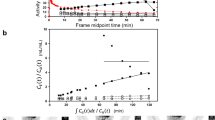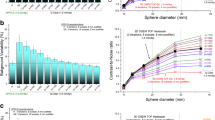Abstract
Objective
Images using the fast row action maximum likelihood algorithm (fast-RAMLA), which employs half-interpolated sinograms of conventional 3DRAMLA, are immediately generated following positron emission tomography (PET) scanning and are invariably produced in the process of line-of-response RAMLA (LOR-RAMLA) reconstruction. We quantitatively and visually compared the clinical validity of dual time point [18F]-FDG imaging with fast-RAMLA and LOR-RAMLA.
Methods
An International Electrotechnical Commission (IEC) phantom was established in which the ratio of the activities in the hot sphere was set up and a background of 3.8:1 was scanned and reconstructed using both algorithms. The contrast recovery coefficient was then calculated. The clinical study retrospectively analyzed 35 patients (25 men and 10 women; age range 30–84 years; mean age 63.9 years) with confirmed specific pathological lesions or clinical follow-up; 21 of the patients had 51 malignant lesions and 15 had 23 benign lesions. The maximum standard uptake value (SUVmax) was measured in all lesions using LOR-RAMLA. The maximal counts of all lesions determined manually were divided by the average count of bilateral ventricles and the aortic arch for standardization on fast-RAMLA, and the values were compared with the SUVmax of LORRAMLA. Inter-observer variation in detection was determined among three radiologists who blindly reviewed and scored 70 maximum intensity projection images from 35 patients reconstructed using LORRAMLA and fast-RAMLA.
Results
We identified a quantitative correlation and determined the visual quality of lesion detection between fast-RAMLA and LOR-RAMLA and indicated usefulness and improvement point on fast-RAMLA.
Conclusions
Fast-RAMLA can improve the strategy for using dual time point [18F] fluorodeoxyglucose positron emission tomography ([18F]-FDG-PET) and increase the efficiency of the [18F]-FDG-PET scanner.
Similar content being viewed by others
References
Liu X, Comtat C, Michel C, Kinahan P, Defrise M, Townsend D. Comparison of 3-D reconstruction with 3D-OSEM and with FORE + OSEM for PET. IEEE Trans Med Imaging 2001;20:804–814.
Comtat C, Kinahan PE, Defrise M, Michel C, Townsend DW. Fast reconstruction of 3D PET data with accurate statistical modeling. IEEE Trans Nucl Sci 1998;45:1083–1089.
Shepp LA, Vardi Y. Maximum likelihood reconstruction for emission tomography. IEEE Trans Med Imaging 1982;1: 113–122.
Lange K, Carson R. EM reconstruction algorithms for emission and transmission tomography. J Comput Assist Tomogr 1984;8:306–316.
Browne JA, De Pierro AB. A row-action alternative to the EM algorithm for maximizing likelihoods in emission tomography. IEEE Trans Med Imaging 1996;15:687–699.
Chiang S, Cardi C, Matej S, Zhuang H, Newberg A, Alavi A, et al. Clinical validation of fully-3D versus 2.5-D RAMLA reconstruction on the Philips-ADAC CPET PET scanner. Nucl Med Commun 2004;25:1103–1107.
Daube-Witherspoon ME, Matej S, Karp JS, Lewitt RM. Application of the row action maximum likelihood algorithm with spherical basis functions to clinical PET imaging. IEEE Trans Nucl Sci 2001;48:24–30.
Lartizien C, Kinahan PE, Swensson R, Comtat C, Lin M, Villemagne V, et al. Evaluation image reconstruction methods for tumor detection in 3-dimensional whole-body PET oncology imaging. J Nucl Med 2003;44:276–290.
Lartizien C, Kinahan PE, Comtat C. A lesion detection observer study comparing 2-dimensional versus fully 3-dimensional whole-body PET imaging protocols. J Nucl Med 2004;45:714–723.
Dan JK. LOR-OSEM: statistical PET reconstruction from raw line-of-response histograms. Phys Med Biol 2004;49: 4731–4744.
Lahner JL, Lanham KS, Lodge MA, Line BR. Evaluation of a fast reconstruction algorithm for 3D PET [abstract]. J Nucl Med 2005;46:510.
Accorsim R, Adam LE, Werner ME, Karp JS. Implementation of a single scatter simulation algorithm for 3D PET: application to emission and transmission scanning. IEEE Nucl Sci Symp Conf Rec 2002;2:816–820.
Zhuang H, Pourdehnad M, Lambright ES, Yamamoto AJ, Lanuti M, Li P, et al. Dual time point 18F-FDG PET imaging for differentiating malignant from inflammatory processes. J Nucl Med 2001;42:1412–1417.
Hustinx R, Smith RJ, Benard F, Rosenthal DI, Machtay M, Farber LA, et al. Dual time point fluorine-18 fluorodeoxyglucose positron emission tomography: a potential method to differentiate malignancy from inflammation and normal tissue in the head and neck. Eur J Nucl Med 1999;26:1345–1348.
Mavi A, Urhan M, Yu JQ, Zhuang H, Houseni M, Cermik TF, et al. Dual time point 18F-FDG PET imaging detects breast cancer with high sensitivity and correlates well with histologic subtypes. J Nucl Med 2006;47:1440–1446.
Kumar R, Loving VA, Chauhan A, Zhuang H, Mitchell S, Alavi A. Potential of dual-time-point imaging to improve breast cancer diagnosis with 18F-FDG PET. J Nucl Med 2005; 46:1819–1824.
Matthies A, Hickeson M, Cuchiara A, Alavi A. Dual time point 18F-FDG PET for the evaluation of pulmonary nodules. J Nucl Med 2002;43:871–875.
Lin WY, Tsai SC, Hung GU. Value of delayed 18F-FDG-PET imaging in the detection of hepatocellular carcinoma. Nucl Med Commun 2005;26:315–321.
Nishiyama Y, Yamamoto Y, Monden T, Sasakawa Y, Tsutsui K, Wakabayashi H, et al. Evaluation of delayed additional FDG PET imaging in patients with pancreatic tumour. Nucl Med Commun 2005;26:895–901.
Kundel HL, Polansky M. Measurement of observer agreement. Radiology 2003;228:303–308.
Schöder H, Yeung HWD. Positron emission imaging of head and neck cancer, including thyroid carcinoma. Semin Nucl Med 2004;3:180–197.
Yeung HWD, Grewal RK, Gonen M, Schöder H, Larson SM. Patterns of 18F-FDG uptake in adipose tissue and muscle: a potential source of false-positive for PET. J Nucl Med 2003;44:1789–1796.
Engel H, Steinert H, Buck A, Berthold T, Huch Böni RA, von Schulthess GK. Whole-body PET: physiological and artifactual fluorodeoxyglucose accumulations. J Nucl Med 1996;37: 441–446.
Sturkenboom MGG, Franssen EJF, Berkhof J, Hoekstra OS. Physiological uptake of [18F]fluorodeoxyglucose in the neck and upper chest region: are there predictive characteristics? Nucl Med Commun 2004;25:1109–1111.
El Fakhri G, Santos PA, Badawi RD, Holdsworth CH, Van Den Abbeele AD, Kijewski MF. Impact of acquisition geometry, image processing, and patient size on lesion detection in whole-body 18F-FDG PET 2007;48:1951–1960.
Kundel HL, Polonsky M. Mixture distribution and receiver operating characteristic analysis of bedside chest imaging using screen-film and computed radiology. Acad Radiol 1997; 4:1–7.
Author information
Authors and Affiliations
Corresponding author
Rights and permissions
About this article
Cite this article
Sato, H., Cho, K., Fukushima, Y. et al. Validation of fast-RAMLA in clinical PET. Ann Nucl Med 22, 869–876 (2008). https://doi.org/10.1007/s12149-008-0196-2
Received:
Accepted:
Published:
Issue Date:
DOI: https://doi.org/10.1007/s12149-008-0196-2




